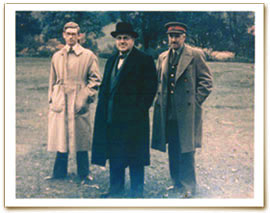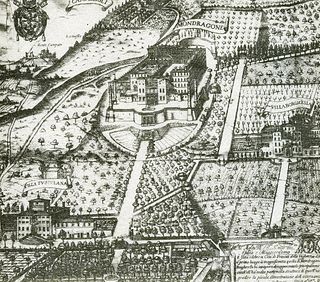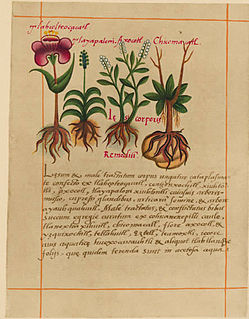Related Research Articles
In philology, decipherment is the discovery of the meaning of texts written in ancient or obscure languages or scripts. Decipherment in cryptography refers to decryption. The term is used sardonically in everyday language to describe attempts to read poor handwriting. In genetics, decipherment is the successful attempt to understand DNA, which is viewed metaphorically as a text containing word-like units. Throughout science the term decipherment is synonymous with the understanding of biological and chemical phenomena.

The Voynich manuscript is an illustrated codex hand-written in an otherwise unknown writing system, referred to as 'Voynichese'. The vellum on which it is written has been carbon-dated to the early 15th century (1404–1438), and stylistic analysis indicates it may have been composed in Italy during the Italian Renaissance. The origins, authorship, and purpose of the manuscript are debated. Various hypotheses have been suggested, including that it is an otherwise unrecorded script for a natural language or constructed language; an unread code, cypher, or other form of cryptography; or simply a meaningless hoax.

The Beinecke Rare Book & Manuscript Library is the rare book library and literary archive of the Yale University Library in New Haven, Connecticut. It is one of the largest buildings in the world dedicated to rare books and manuscripts. Established by a gift of the Beinecke family and given its own financial endowment, the library is financially independent from the university and is co-governed by the University Library and Yale Corporation.

Raphael Sobiehrd-Mnishovsky of Sebuzin and of Horstein was a Bohemian lawyer and writer, who held various secretarial, diplomatic, and judicial posts under Rudolf II, Mathias, Ferdinand II, and Ferdinand III, under whom Raphael was the attorney-general.

Jakub Hořčický, later granted the title z Tepence, was a Bohemian pharmacist and personal doctor of Emperor Rudolf II. The latinized name is a translation of his family name, which means "mustard" in Czech.

Jan Marek Marci, or JohannesMarcus Marci, was a Bohemian doctor and scientist, rector of the University of Prague, and official physician to the Holy Roman Emperors. The crater Marci on the far side of the Moon is named after him.

Brigadier John Hessell Tiltman, was a British Army officer who worked in intelligence, often at or with the Government Code and Cypher School (GC&CS) starting in the 1920s. His intelligence work was largely connected with cryptography, and he showed exceptional skill at cryptanalysis. His work in association with Bill Tutte on the cryptanalysis of the Lorenz cipher, the German teleprinter cipher, called "Tunny" at Bletchley Park, led to breakthroughs in attack methods on the code, without a computer. It was to exploit those methods, at extremely high speed with great reliability, that Colossus, the first digital programmable electronic computer, was designed and built.

Wilfrid Voynich was a Polish revolutionary, antiquarian and bibliophile. Voynich operated one of the largest rare book businesses in the world, but he is remembered as the eponym of the Voynich manuscript.

Ethel Lilian Voynich, néeBoole was an Irish-born British novelist and musician, and a supporter of several revolutionary causes. She was born in Cork, but grew up in Lancashire, England. Voynich was a significant figure, not only on the late Victorian literary scene, but also in Russian émigré circles. She is best known for her novel The Gadfly, which became hugely popular in her lifetime, especially in Russia.
Voynich may refer to:

Villa Mondragone is a patrician villa originally in the territory of the Italian comune of Frascati, now in the territory of Monte Porzio Catone. It lies on a hill 416m above sea-level, in an area called, from its many castles and villas, Castelli Romani about 20 km (12 mi) southeast of Rome, near the ancient town of Tusculum.
Nick Pelling is a British-born computer programmer and investigative writer best known as the creator of the 1984 game Frak!.
Gordon Rugg is a British academic, head of the Knowledge Modelling Group at Keele University and a visiting Senior Research Fellow at the Open University, known for his work on the Voynich manuscript.

The Libellus de Medicinalibus Indorum Herbis is an Aztec herbal manuscript, describing the medicinal properties of various plants used by the Aztecs. It was translated into Latin by Juan Badiano, from a Nahuatl original composed in the Colegio de Santa Cruz de Tlatelolco in 1552 by Martín de la Cruz that is no longer extant. The Libellus is also known as the Badianus Manuscript, after the translator; the Codex de la Cruz-Badiano, after both the original author and translator; and the Codex Barberini, after Cardinal Francesco Barberini, who had possession of the manuscript in the early 17th century.
Anthony Ascham, was an English astrologer.
Georg Baresch, Czech: Jiří Bareš (1585–1662), was a Czech antique collector and alchemist from Prague known for his connection to the Voynich manuscript.

William Romaine Newbold was an American philosopher who held the Adam Seybert Professor of Intellectual and Moral Philosophy chair at the University of Pennsylvania from 1907 to 1926. Newbold was noted for his lectures and writings on the psychology of religion, Christian Gnosticism, and cryptography.
John Matthews Manly was an American professor of English literature and philology at the University of Chicago. Manly specialized in the study of the works of William Shakespeare and Geoffrey Chaucer. His eight-volume work, The Text of the Canterbury Tales (1940), written in collaboration with his former student Edith Rickert, has been cited as a definitive study of Chaucer's works.
Mary D'Imperio was an American cryptographer.

Nymphoides indica is an aquatic plant in the Menyanthaceae, native to tropical areas around the world. It is sometimes cultivated, and has become a minor weed in Florida, where it resembles the native Nymphoides aquatica. Common names include banana plant, robust marshwort, and water snowflake; {In Bengali: চাঁদমালা (Chandmala)}.
References
- ↑ "Palmierite mineral information and data".
- ↑ Barabe, Joseph G. (April 1, 2009). "Materials analysis of the Voynich Manuscript" (PDF). Beinecke Library (McCrone Associates). Archived from the original (PDF) on March 4, 2016. Retrieved June 8, 2016.